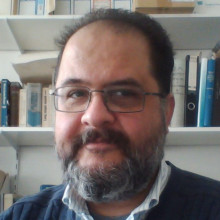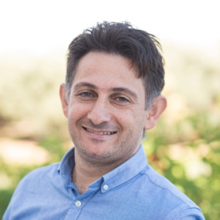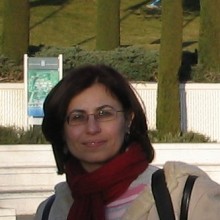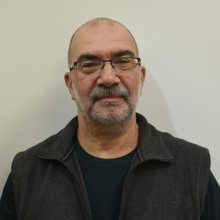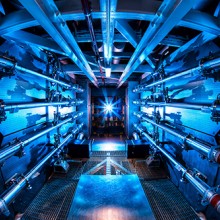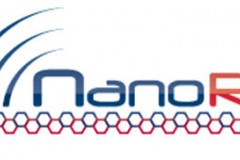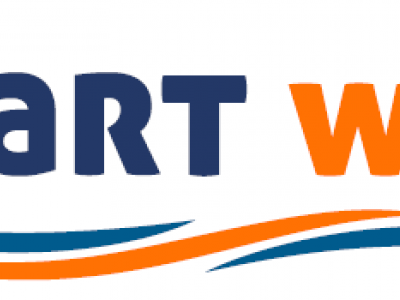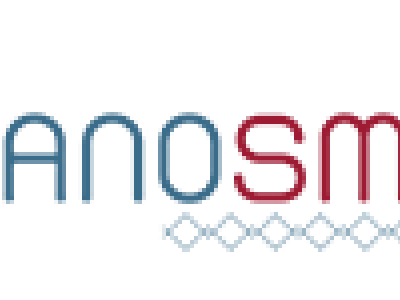ITSSUED stands for “Imaging Transition State Structure with Ultrafast Electron Diffraction”.
It is one of the two grants supporting different parts of the TED activity at IESL-FORTH. ITSSUED is co-funded by EU (European Social Fund) and Greek National Funds (General Secretariat of Research & Technology) under NSRF2007-2013.
Its implementation started on May 16, 2012 and will be completed on September 15, 2015.

Funding

Neural stem cells (NSC) have emerged as new therapeutic agents with potential applications in neuronal injury and repair. However, the successful translation of NSC-based therapies requires more sophisticated technologies from the ones that are actually available. Two dimensional (2D) cultures of NSC have been studied to some extent; however three dimensional (3D) neuronal networks which simulate brain conditions maintaining functional neuronal properties (synaptogenesis and neurotrophic performance) remains a challenge. The proposal aims in responding to this challenge by developing 3D laser-engineered micro/nano scaffolds (3DLS) for hosting NSC 3D cultures, as an advantageous platform to study the biology and neurochemistry of NSC proliferation, differentiation, neuritogenesis and synaptogenesis. Initially, the functionality of the neuronal networks developed onto 3DLS will be tested, using a combination of state-of-the-art technologies, including two-photon imaging, advanced electrophysiology, functional genomics and proteomics.The 3DLS-NSC networks will be tested in two applications, by developing: i) 3DLS neuroimplants, hosting mouse NSC, for effectively bridging interrupted spinal cord (SC) in animal models, ii) 3DLS-NSC neurobiosensors for high-throughput screening of new neurogenic compounds, regulators of NSC self-renewal, survival and differentiation. The proposal will advance our basal knowledge on NSC proliferation, differentiation, migration and networking, studying their biological behaviour under 3D conditions.

It is that specific need that Skin-DOCTor proposes to cover by developing new theoretical approaches implementing diffusive light propagation and building an optical prototype system delivering three-dimensionally accurate images of pigmented skin lesions, advancing Optical Computed Tomography (Figure 2) beyond the current state of the art. This will enable the extraction of accurate, quantitative results at depths of several mm, exceeding the limit of currently available technologies. The specific target of this technological development is the realization of a clinical system for the in situ evaluation and classification of pigmented skin lesions biopsy samples. Characterization and discrimination of benign from malignant melanocytic lesions will be achieved with higher sensitivity and specificity than current technologies, matching the diagnostic value of histopathological examination. In addition, accurate calculation of the depth of the lesion will be achieved and advanced expert learning algorithms will be employed to accomplish optimal diagnostic and prognostic capabilities based on the ultimate concepts of heterogeneous data integration. Considering the wide array of multimodal and multiscale biomedical data separately available for disease characterization (from 1D to 3D), Skin-DOCTor proposes the integration of heterogeneous biomedical data in order to construct an accurate diagnostic support tool. This system will be functional within the operating room and will provide immediate results to the surgeon.

Clinical studies report that the diagnosis by simple inspection has a sensitivity of 65%-80%, depending on the dermatologist’s experience and training [Kittler et. al., Lancet Oncol., 3, 159-165, (2002)]. Considering that the clinical progression of patients suffering from skin melanoma is directly associated with the early diagnosis of the tumor, the establishment of an objective, accurate, quantitative method is of high priority. The necessity for improvement in diagnostic accuracy of melanocytic lesions led to the development of imaging methods such as in vivo confocal laser scanning microscopy, second harmonic generation imaging, spectroscopy and optical coherence tomography, none of which, so far, have gained wide acceptance in clinical practice as a diagnostic tool. Optical Coherence Tomography has been suggested as the optical analogous of histology and while it provides very high resolution images it suffers (similarly to the other techniques) from light diffusion inside tissue and reaches, at best, depths of 1mm. So far the most advanced approaches to optical imaging of tissue function and structure are separated depending on the amount of scattering present in the media. At the two ends of the scattering regime lie Optical Projection Tomography (OPT) [Sharpe, Ahlgren, et al., Science 5567, 541-544, (2002)], which is capable of imaging non scattering samples, such as optically cleared animal embryos and pupae, and Diffusion Optical Tomography (DOT), [Arridge, Inverse Problems, 15, R41-R93, (1999)], a technique applied to imaging small animals and humans where light scattering is not disregarded and the propagation of light is considered diffusive. The region lying between these two extremes, defined mesoscopic, remains however without a specific theoretical approach that can accurately describe weakly diffusive light propagation. It is in this region that small animal specimens, such as zebra fish, and small tissue samples, such as biopsies, lie in respect to absorption and scattering of transmitted light. The current Optical Computed Tomography systems represent projections as line integrals generated from multiple sources that emit light along parallel rays, which are transformed according to Beer’s law to calculate the sums of attenuation coefficients (Figure 2). However, when light scattering becomes significant and therefore it cannot be ignored, ballistic propagation required by Beer’s Law fails to deliver accurate images.
Funding

Novel artificial materials [photonic crystals (PCs), negative index materials (NIMs), and plasmonics] enable the realization of innovative electromagnetic (EM) properties unattainable in naturally existing materials. These materials, characterized here as metamaterials, have been in the foreground of scientific interest in the last ten years. However, many serious obstacles must be overcome before the impressive possibilities of metamaterials, especially in the optical regime, become real applications.
The present project combines NIMs, PCs, and aspects of plasmonics in a unified way in order to promote the development of functional metamaterials, and mainly functional optical metamaterials (OMMs). It identifies the main obstacles, proposes specific approaches to deal with them, and intends to study unexplored capabilities of OMMs.
The project objectives are: (a) Design and realization of 3D optical and chiral OMMs. (b) Understanding and reducing the losses in OMM by incorporating gain and EM induced transparency (EIT). (c) Use chiral metamaterials to achieve and manipulate repulsive Casimir forces. (d) Use surface states for super transmission and beaming in PCs. and (e) Use PCs to enhance or suppress the spontaneous emission of sources, targeting designs of low threshold lasers and shielding vacuum fluctuations. The unifying link in all these objectives is the endowment of photons with novel properties through imaginative use of EM-field / artificial-matter interactions. Some of these objectives seem almost certainly realizable; others are more risky but with higher reward if accomplished; some are directed towards new specific applications, while others explore new physical reality.The accomplishment of those objectives requires novel ideas, advanced computational techniques, nanofabrication approaches, and testing. The broad theoretical and experimental expertise of the proposers, and their pioneering contributions to NIMs and PCs, qualifies them for facing the challenges and ensuring the maximum possible success of the project.

Funding
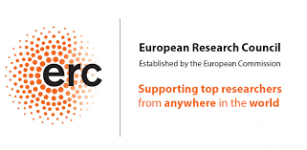
Αντικείμενο έρευνας του έργου αποτελεί μια νέα γενιά υλικών από ετεροδομές ΙΙΙ-Νιτριδίων που μπορεί να επιτρέψουν μελλοντικά την υλοποίηση διατάξεων HEMT με πρωτοποριακή απόδοση. Οι ετεροδομές αξιοποιούν τα πλεονεκτήματα που προσφέρει η χρήση στρώματος φραγμού AlN ή καναλιού InN. Λεπτά στρώματα φραγμού AlN (πάνω σε κανάλι GaN) μπορούν να δώσουν κανάλια 2DEG με την μέγιστη συγκέντρωση και εγγύτητα ως προς την επιφάνεια, ώστε να είναι δυνατή η κατασκευή Πυλών με τις μικρότερες διαστάσεις στη νανοκλίμακα. Τα κανάλια InN μπορούν να προσφέρουν τις μέγιστες τιμές ευκινησίας χαμηλού πεδίου και ταχύτητας ολίσθησης κόρου μεταξύ των ημιαγωγών ΙΙΙ-Νιτριδίων.
Το έργο οδηγεί στη ανάπτυξη τεχνογνωσίας για εξειδικευμένο σχεδιασμό ετεροδομών HEMT III-Νιτριδίων, ανάλογα με την επιθυμητή εφαρμογή. Αυτό βασίζεται στη βασική κατανόηση της φυσικής της επιταξιακής ανάπτυξης και των ηλεκτρονικών ιδιοτήτων των ετεροδομών και των επιφανειών τους, συνδυάζοντας εκτεταμένη πειραματική δουλειά και θεωρητικούς υπολογισμούς. Το ερευνητικό έργο προάγει την τεχνογνωσία της ερευνητικής ομάδας στην επίταξη με μοριακές δέσμες με τη βοήθεια πλάσματος αζώτου (PAMBE) και στον σχεδιασμό ετεροδομών των ΙΙΙ-Νιτριδίων.

Το έργο οδηγεί στη ανάπτυξη τεχνογνωσίας για εξειδικευμένο σχεδιασμό ετεροδομών HEMT III-Νιτριδίων, ανάλογα με την επιθυμητή εφαρμογή. Αυτό βασίζεται στη βασική κατανόηση της φυσικής της επιταξιακής ανάπτυξης και των ηλεκτρονικών ιδιοτήτων των ετεροδομών και των επιφανειών τους, συνδυάζοντας εκτεταμένη πειραματική δουλειά και θεωρητικούς υπολογισμούς. Το ερευνητικό έργο προάγει την τεχνογνωσία της ερευνητικής ομάδας στην επίταξη με μοριακές δέσμες με τη βοήθεια πλάσματος αζώτου (PAMBE) και στον σχεδιασμό ετεροδομών των ΙΙΙ-Νιτριδίων.
Funding

Concept of the Nano-RF Project
From the strategic agendas of ENIAC, EPoSS and ITRS, it is evident that wireless applications are gaining more and more importance that results to new requirements in terms of miniaturization and increased complexity. The limitations of Moore’s Law in term of physics but also in terms of manufacturability, flexibility and multi-functionality has motivated research and development to implement new technologies and new wireless architectures identified as Beyond CMOS and More than Moore.
Carbon nanotubes (CNTs) are featuring very attractive intrinsic multi-physic properties.
These properties coupled with CMOS compatibility offer promise for a new generation of smart miniaturised systems for wireless communications. Graphene also exhibits impressive electrical and mechanical properties. CMOS compatible microwave graphene devices, still at their infancy, hold promise for extremely low noise and high speed communications.
The coordinator (TRT) is one of the major world players in civilian & professional electronics. TAS is N°1 in Europe and N°3 worldwide for civil and military aerospace products. One key area for their products is T/R front-end systems for applications like radars for which long term solutions are continuously sought after.
The main concept of NANO-RF is the development of CNT & graphene based advanced component technologies for the implementation of miniaturised electronic systems for 2020 and beyond wireless communications and radars.
The major objectives of NANO-RF are the development of:
- Active components from CNTs & graphene
- Passive components from CNTs & graphene
- Capacitive RF NEMS from CNTs
- CNTs based vertical interconnects
- CNTs & graphene based ICs
The developed components and technologies will be implemented in the following demonstrators:
- Reflect array antennae for wake vortex and weather radars and
- Graphene receiver module
The demonstrators will exhibit the reconfigurability, systemability, integratability and manufacturability of the developed technologies and unify advanced More-than-Moore elements and Beyond-CMOS devices with existing technologies. It addresses "System
Perspective" to support miniaturised electronic systems for 2020 and beyond.

Funding
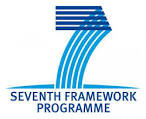
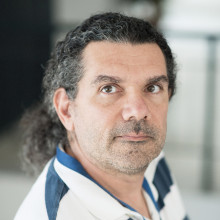
Dr. George Deligeorgis earned his PhD in 2008 working on GaAs based Semiconductor laser diodes for telecommunication applications. Following his PhD, carbon-based devices (Graphene and CNTs) became his principal research interest. He stayed in LAAS-CNRS (Laboratory for analysis and architecture of Systems, National Center of Scientific Research), in France between 2010-2014 where he continued his activity in the same subject. He is a Researcher in FORTH - IESL since (2015) working on high frequency carbon and 2D based devices.
Dr. Deligeorgis has worked on numerous projects in design and fabrication of compound semiconductor devices in the field of photonics and high frequency electronics (MMIC) for the last decade. He was involved in several National and European funded projects in the fields of photonics, RF device fabrication and polaritonic devices. He is currently leading the 2 dimensional material based electronics activity in the microelectornics research group, while working on nonlinear graphene based RF devices and polariton optoelectronics devices combining his knowledge in physics and nanotechnology. He has published more than 60 articles in peer-reviewed journals and has several invited and contributed talks. Finally, Dr. Deligeorgis is a founding member of the “Graphene Center, Greece”, member of the Steering board of Micro & Nano nanotechnology company, a member of several associations (IEEE e.t.c) and a reviewer in several international journals
Education
- 2008 Ph.D., in Physics; Physics Dpt, University of Crete, Greece
- 2002 M.Sc. in Microelectornics / Optoelectronics, Physics; Physics Dpt, University of Crete, Greece
- 2000 B.Sc., in Physics; Dept. of Physics, University of Athens, Greece
Career
- 12/2019 - today, Principal Researcher (Grade B), FORTH - IESL, Greece
- 02/2018 - today, Adjunct Professor, Physics Departement, University of Crete, Greece
- 09/2015 – 11/2019, Associate Researcher (Grade C; tenure-track), FORTH- IESL, Greece
- 04/2014 – 08/2015, Research Associate, FORTH- IESL, Greece
- 04/2011 – 03/2014, Researcher (contractual), Laboratoire d'Architecture et des systemes (LAAS), CNRS, France
- 04/2010 – 03/2011 PostDoctoral Fellow, Laboratoire d'Architecture et des systemes (LAAS), CNRS, FR
- 07/2008 – 11/2009 Postdoctoral Fellow; Foundation for Research and Tecnhology Hellas, GR
Interests
- 2D materials
- High frequency electronics
- Carbon nanotubes
- Nano electronics fabrication
- Nano photonics
Other
I am currently leading the High frequency measurement facility and the 2D materials activity within the Microelectornics lab.


